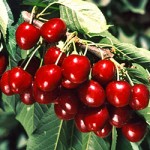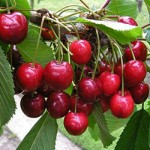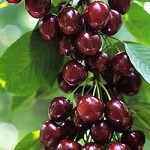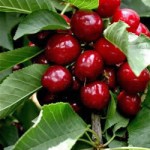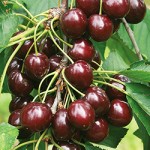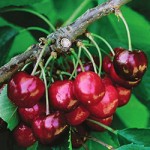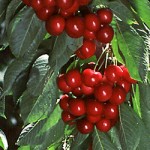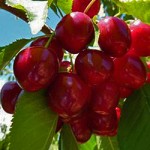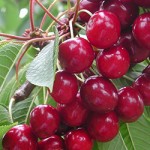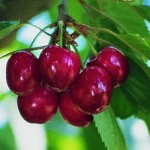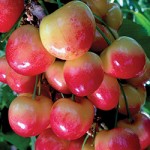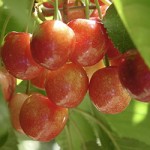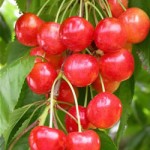Two main types of cherries are produced in the United States: sweet cherries and tart or ‘sour’ cherries. Washington, California, and Oregon are the primary sweet cherry producing states, accounting for more than 73 percent of the quantity produced nationwide (Northwest Horticultural Council, 2022 Fact Sheet). U.S. fresh sweet cherry production in 2022 totaled 84,500 acres and 231,700 tons. Washington continues to be the leading state in sweet cherry production with with 240,000 tons estimated for 2023, followed by Oregon with 51,000 tons (NASS Tree Fruit Report). The United States is the second-largest producer of cherries in the world after Turkey (FAOSTAT 2019). Additional Pacific Northwest cherry facts can be found on the Northwest Horticultural Council website.
The cultivar “Bing” has been one of the most important sweet cherry varieties grown in the Pacific Northwest, representing more than 50 percent of the production in Washington (Washington State Tree Fruit Acreage Report, 2017). Because ‘Bing’ is so popular, it is utilized as a reference to compare with other cultivars and new varieties. In recent years, there has been more interest in improved varieties leading to extensive plantings of newer selections. Some traits that breeders are selecting for include early ripening, larger size, firm, self-fertility, rain cracking resistance and stem-free characteristics. The majority of the newer varieties grown in the Pacific Northwest were produced or selected by the WSU-IAREC Sweet Cherry Breeding Program in Prosser (Olmstead et al 2000) and the Pacific Agri-Food Research Centre (PARC) in Summerland, B.C., Canada.
The most commonly grown sweet cherry varieties in the Pacific Northwest are shown below in the thumbnail gallery and are arranged by the two main color groups: Reds or Mahogany and Blush or Yellow types. Click on the image to open the full view for information about each variety.
